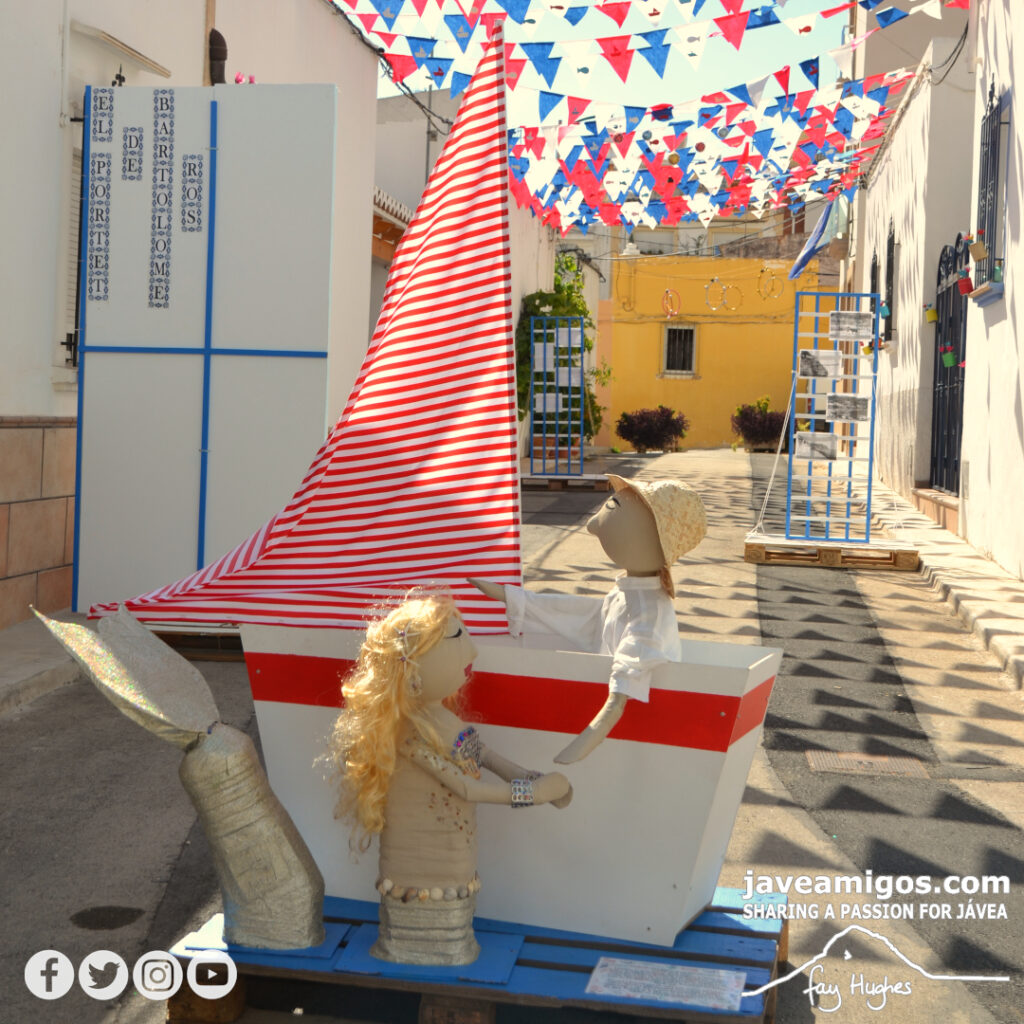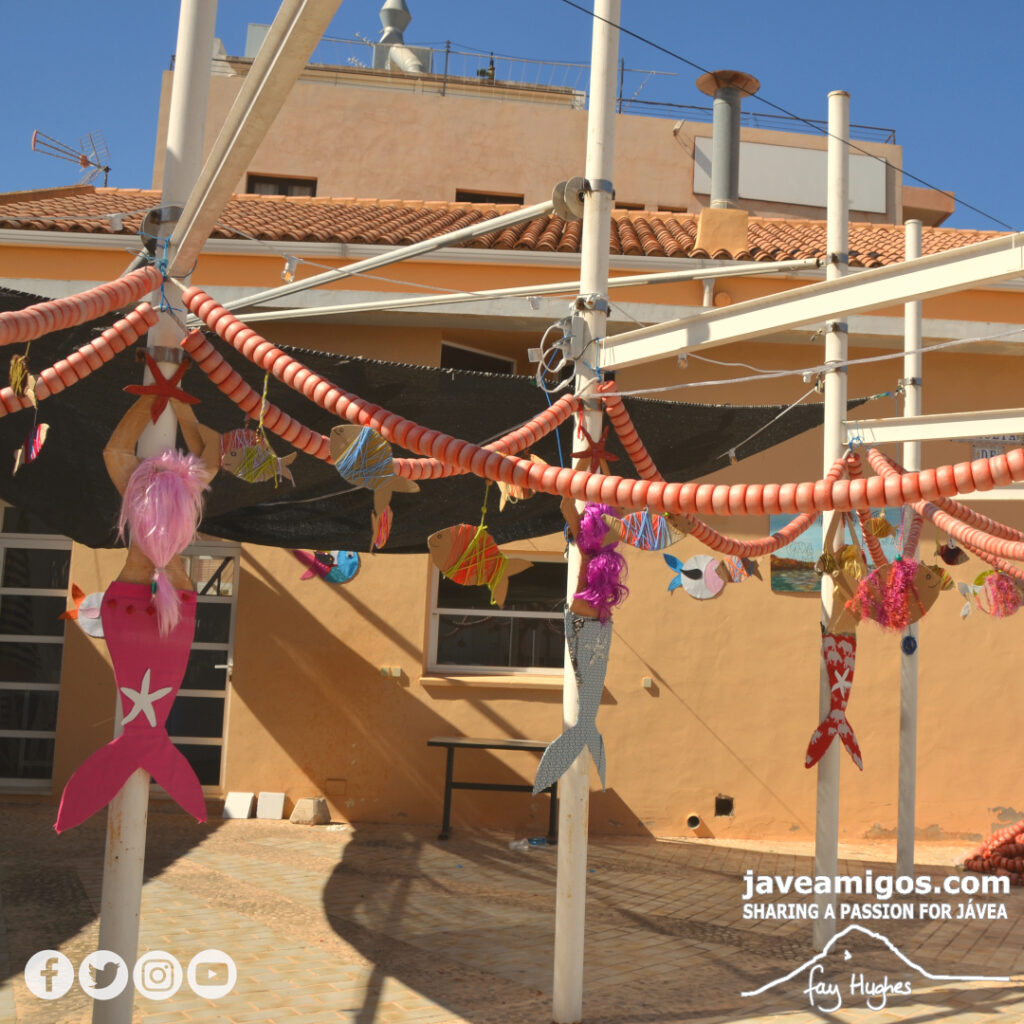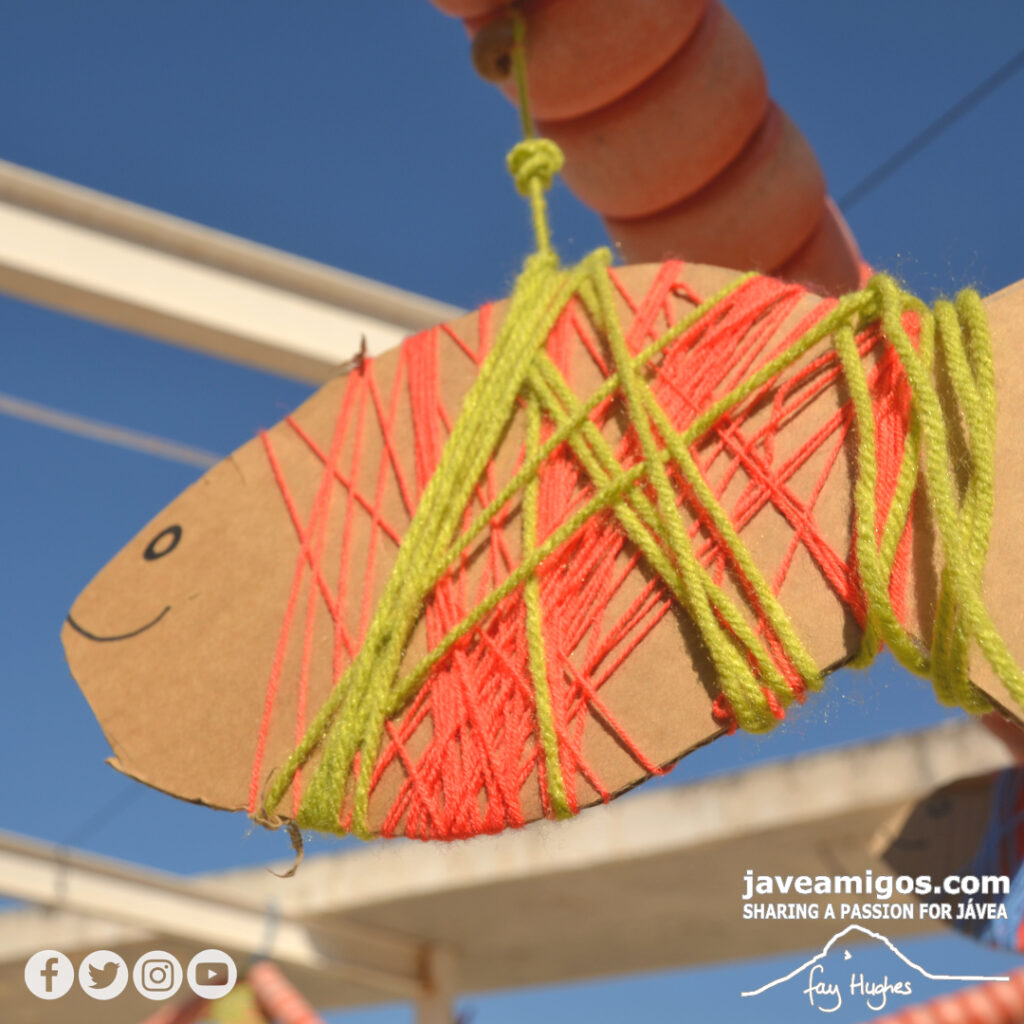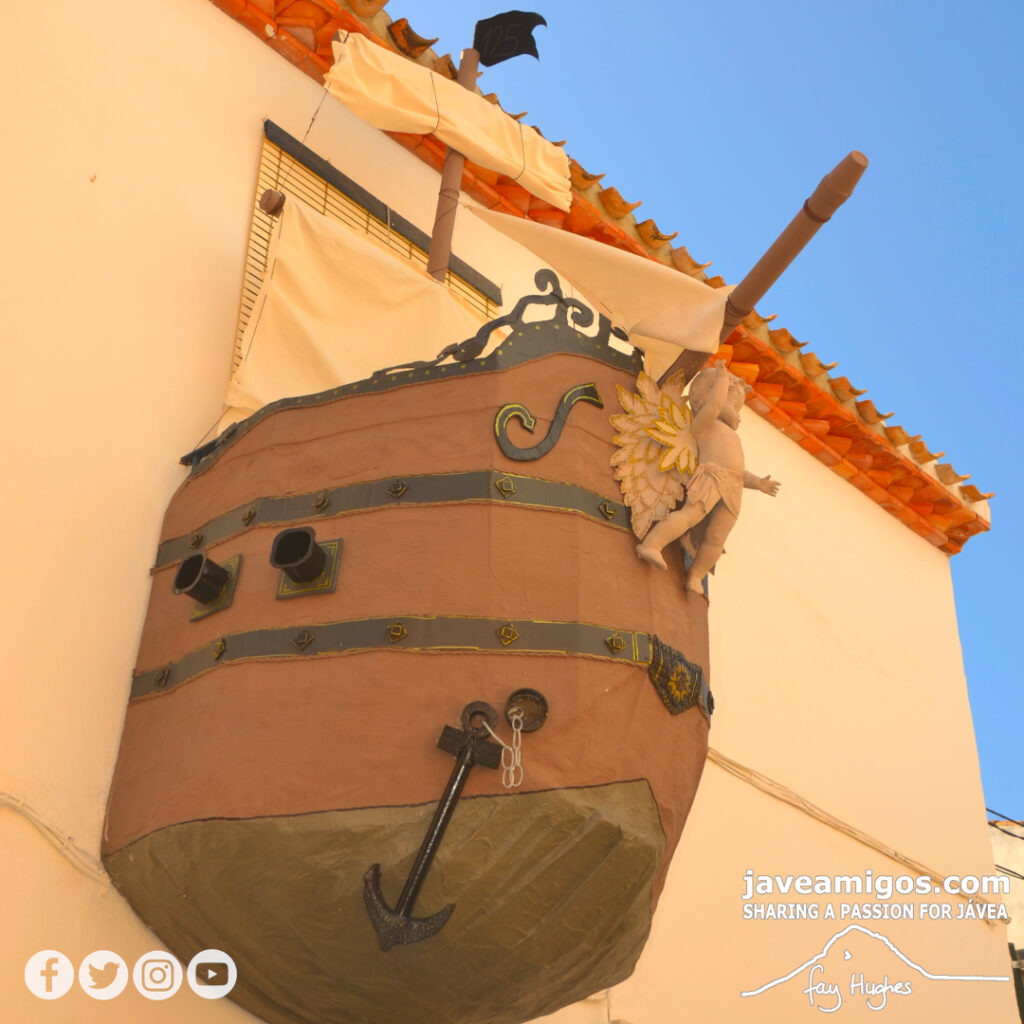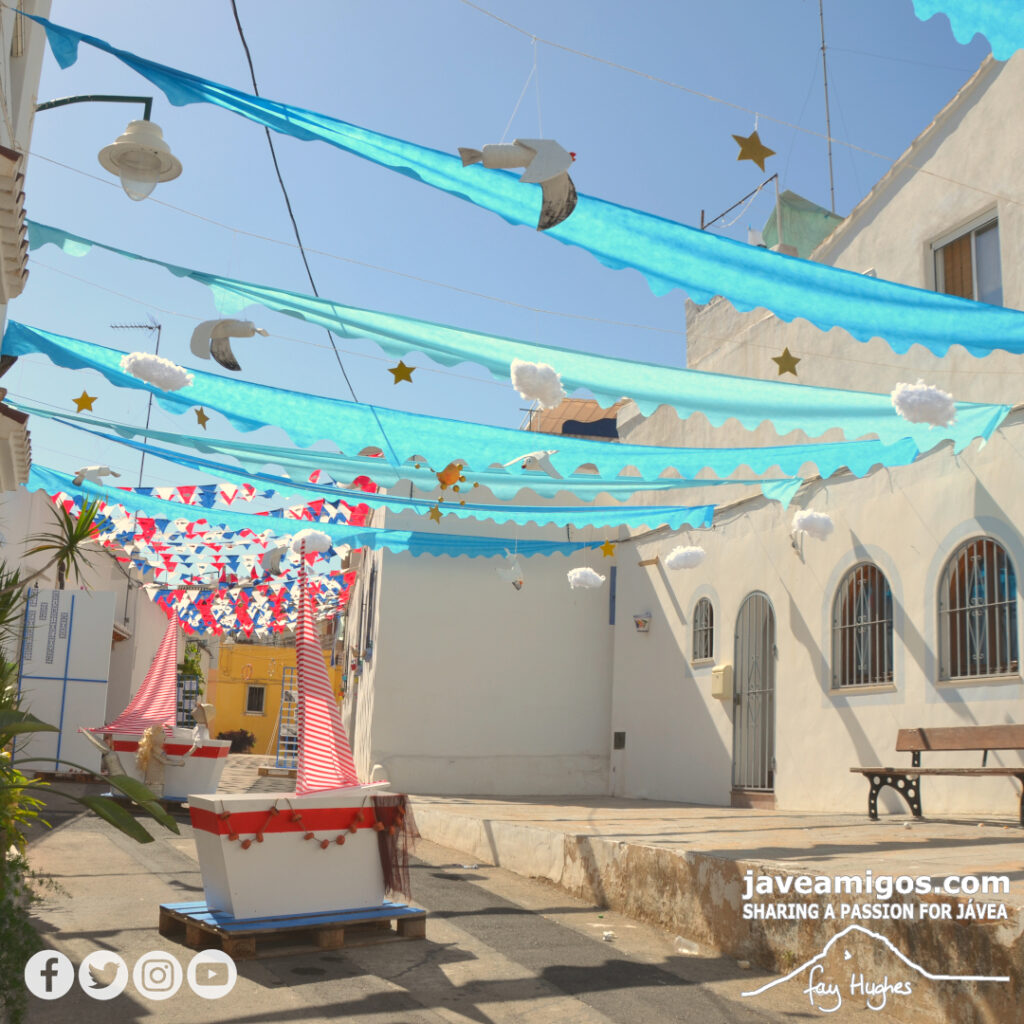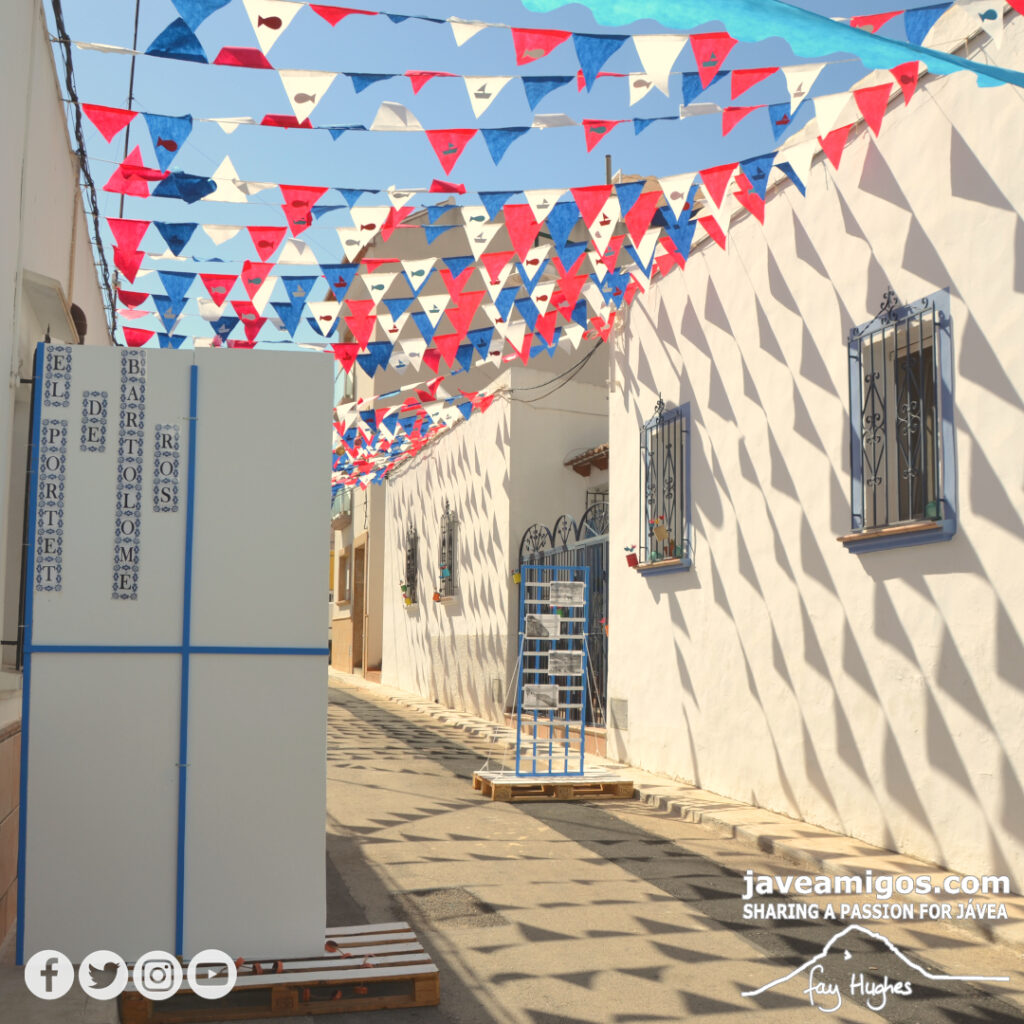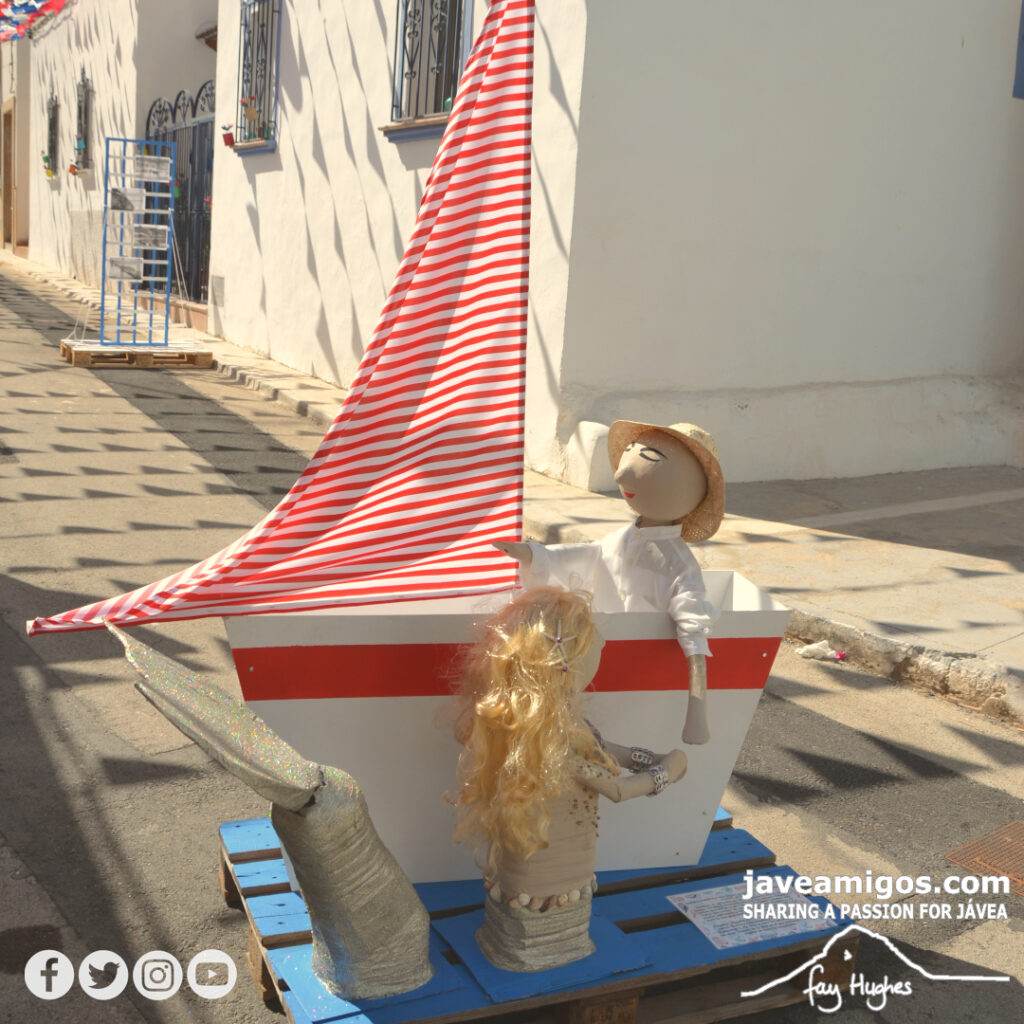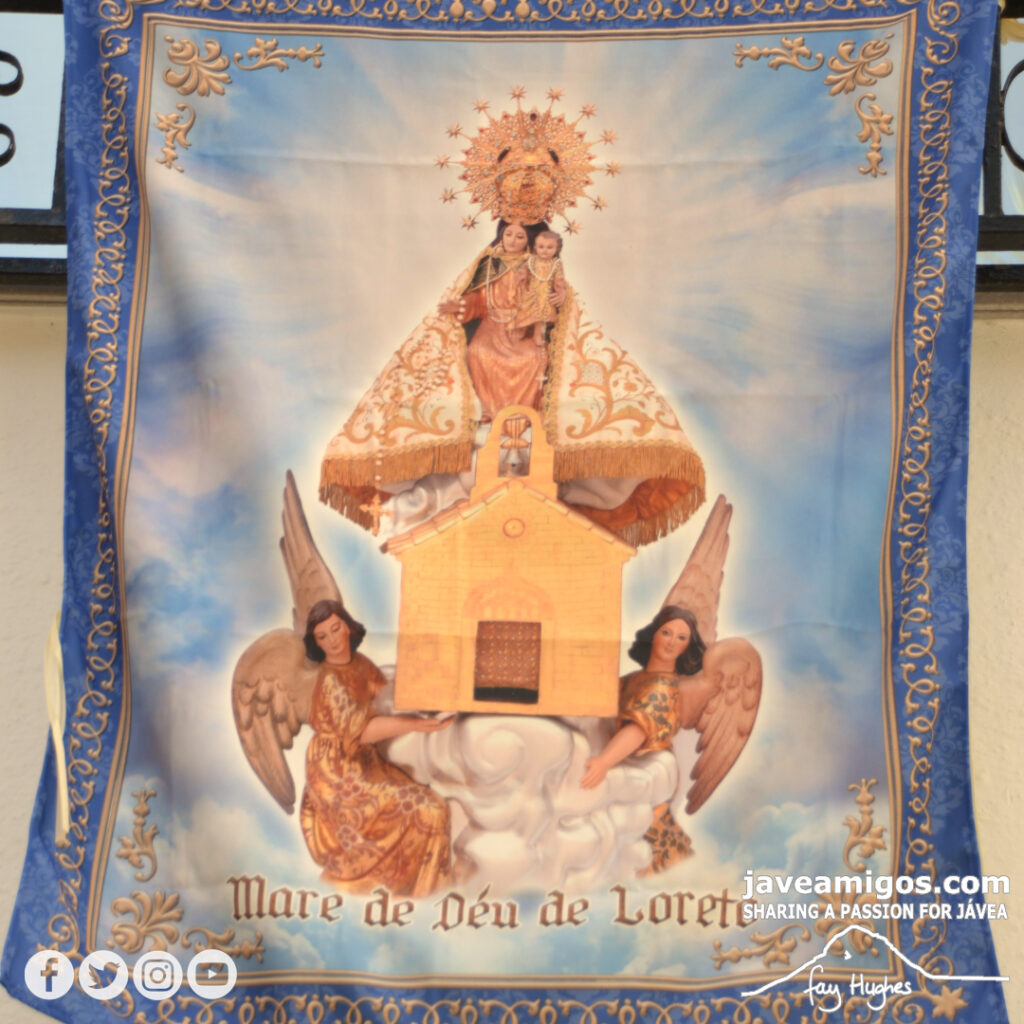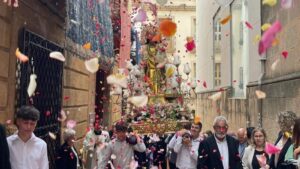The port decorates its streets for 125th anniversary of the patron saint festivities
This edition is the one with the greatest number of decorations in the last decade, although it cannot be compared with the celebration of the Centenary in 1996 when practically the entire port neighborhood was decorated.
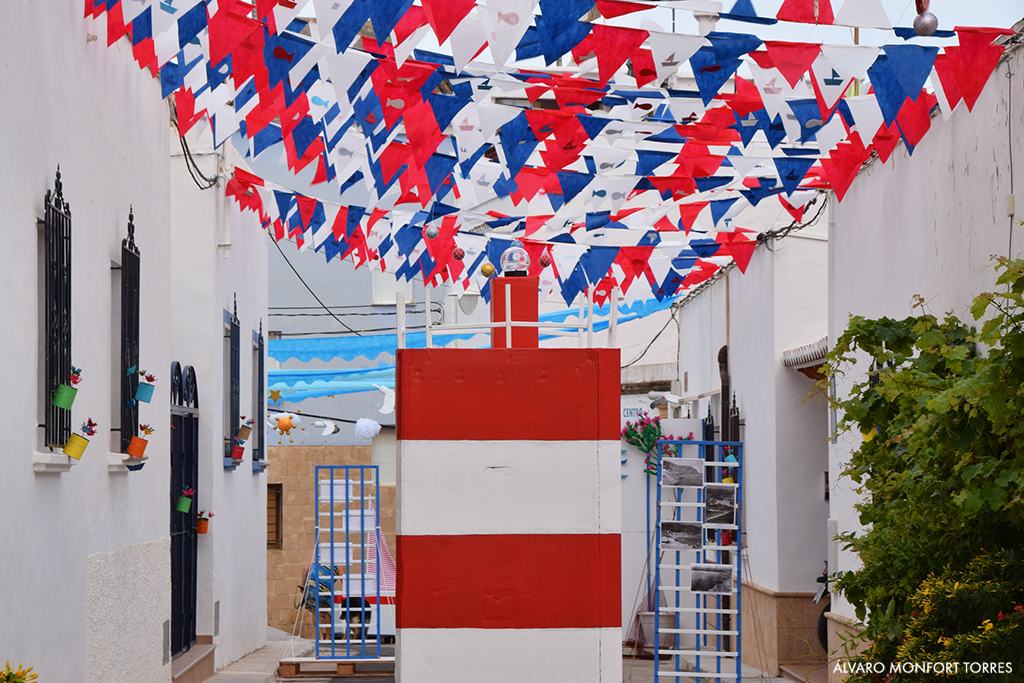
Monday 5th September 2022 · Mike Smith
Source: XAD Álvaro Monfort
A 125th anniversary is not celebrated every day. The festivities in honor of the Mare de Déu de Loreto are one of the oldest celebrations in Xàbia and the one that has best preserved and grown over the years. The anniversary is very special and the residents of Duanes de la Mar know exactly how to respond as expected in order to magnify it. There is a great feeling of pride in each intervention of the Comissió de Festes and the neighborhood because “you have to rise to the occasion despite adversity.”
This edition is the one with the greatest number of decorations in the last decade, although it cannot be compared with the celebration of the Centenary in 1996 when practically the entire port neighborhood was decorated with creations of all kinds and almost all the streets had ornamental lighting provided by the town hall.
In 25 (actually 26) years things have changed a lot and that adversity that residents talk about has many forms. Times have changed, many are no longer one of those “lifelong” who have grown up watching their fathers and mothers create the decorations until it is their turn to pick up the baton – or rather the scissors. On some occasions, this taste for creative and altruistic work has not been known (or has not been possible) to convey to newcomers. The hands have grown old and, although willing and with an unbreakable spirit, reality is what it is.
The layout of the port does not help either, with its streets and wide avenues perennially traveled. If the realization of any fiesta already entails a logical disorder in circulation, it would be greater if, in addition, important access or exit roads were closed due to decorations. It would be wonderful as it would serve to return public spaces to people at the expense of vehicles. But it would also be a problem.
One of the main streets affected by this is Calle Doctor Fleming. In the 90s it housed dreamy decorations such as the one with a Venetian setting, the sequer or the reproduction of the old chapel that stood where the Loreto parish currently stands. The residents painted the entire street, even taking over the adjacent Calle Severo Ochoa and Calle Toni Llidó. It was possible. Avenida Marina Española was not a promenade as it is today but a street with traffic and Calle Doctor Fleming was not one of the main access routes as it is today.
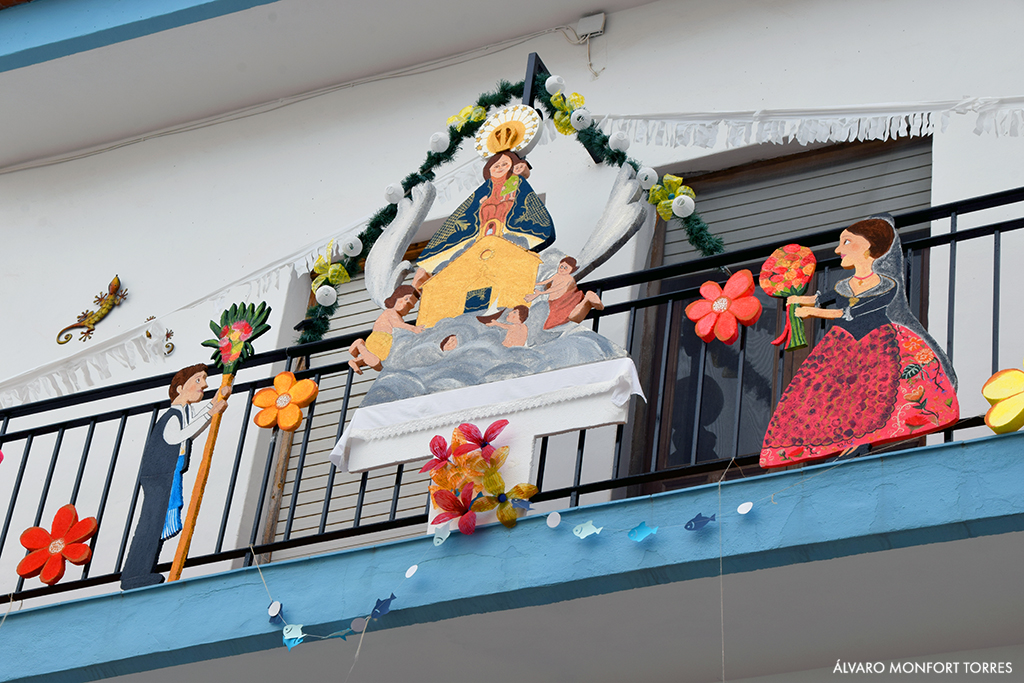
Despite everything, the port has adorned itself and the neighborhood breathes the aroma of celebration on all four sides. There are creations of all kinds, from the simplest ones that resort to acquired ornaments to the most complex ones of created from scratch by hand. No matter the time invested or the quality of the final result. The important thing is to correspond to the fiesta, to the feeling of collective brotherhood and contribute to reinforcing it, extolling it and increasing it. Popular fiestas are meaningless without the corresponding reciprocity from the neighbourhood beyond its participation in scheduled events. They are from all over the world and as responsible agents in their achievement, the answer must be unanimous from the possibilities of each one.
For example, the traditional blankets, which are usually placed on the days of greatest religious fervor, are already fluttering from many balconies. The neighborhood wants to join the fiestas and hanging them is the simple way many people show it.
Taking a walk through the port, it is easy to see that the maritime theme and the 125th anniversary are the axes of the imaginaries created in this edition. It is not one of the requirements of the competition for streets, shop windows and balconies motivated by the Xàbia Port business association; simply the residents have coincided in a clear reaffirmation of the roots of the party. Despite this, each demarcation has been able to give it its own identity and character.
Due to its size and road activity, Calle Santísimo Cristo del Mar is one of the streets that has never been decorated beyond the installation of ornamental lights. However, its residents had been wanting to decorate it for years and the 125th anniversary has been the push they needed. Thus, one of the main arteries out of the port bears cloth banners that announce the event that is commemorated with the image of the Virgin. In some of the balconies, tulle bows with maritime motifs have also been installed.
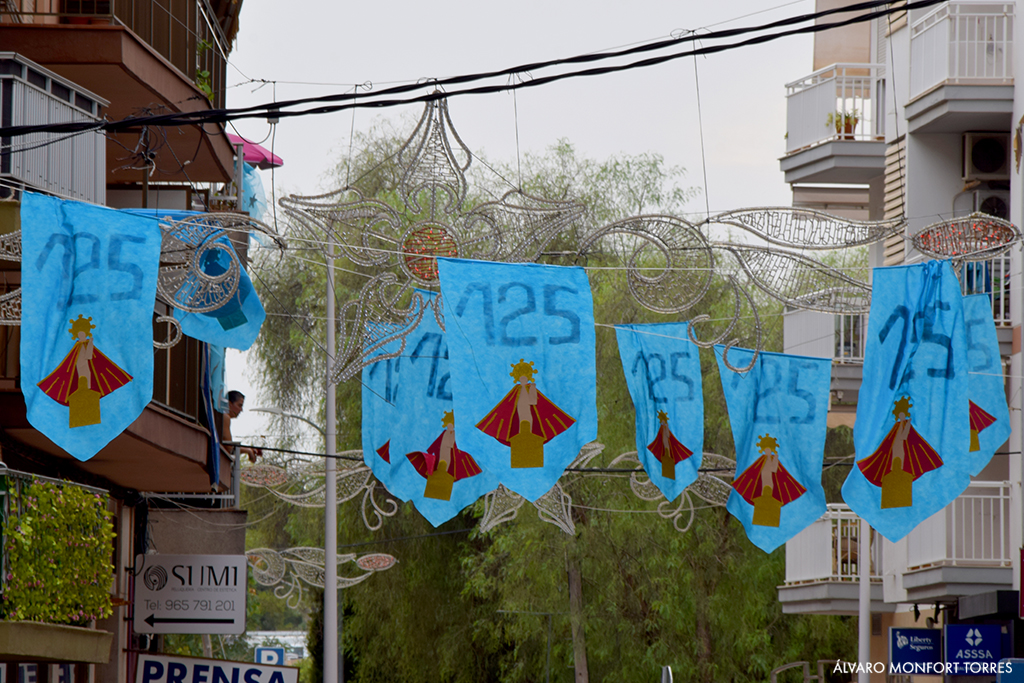
Calle Bartolomé Ros presents El Portet de Bartolomé Ros and divides its 50-metre length into two parts: the sea and the port. In the first, the ceiling is covered with seagulls, stars and clouds. Two ships sail peacefully and one of them is a sweet picture in which a sailor gives his heart to a mermaid. It is a small tribute to the two oldest residents on the street, Amadeo and Paquita. In fact, according to its creators, Paquita was the one who encouraged the tradition not to decline ten years ago. In the second part, a Mediterranean town in full celebration is reproduced with a section of old photographs of what Duanes was like decades ago. Recycled materials, wood, fabric and cardboard abound on this street.
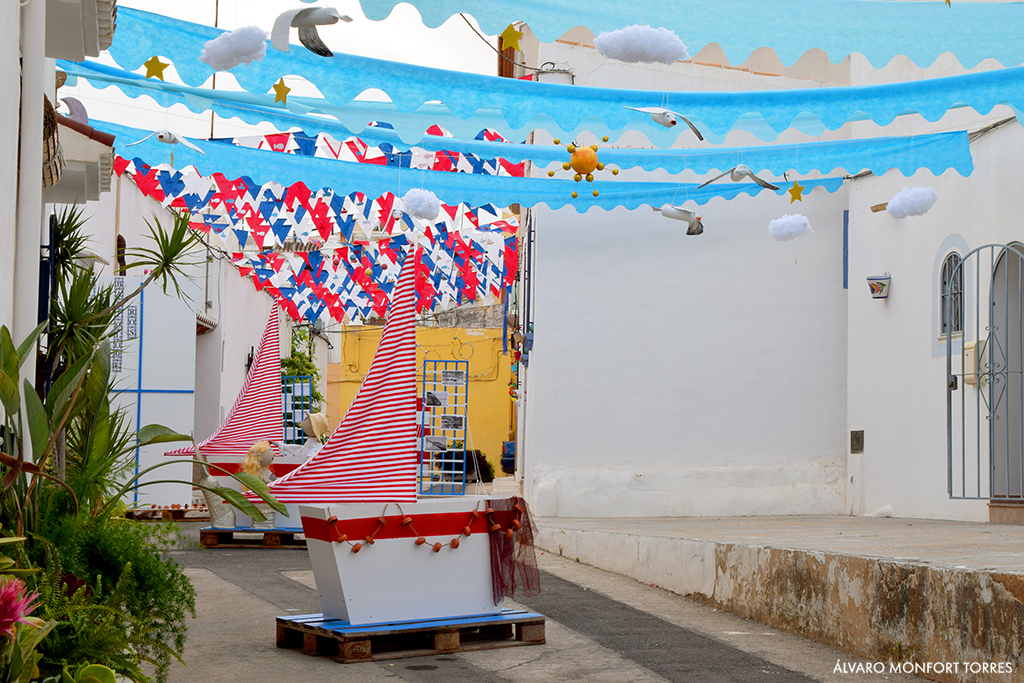
In the square of the Casa del Pescador, La Penyeta Roja has created a colourful reef of mermaids that seem to support the colonnade of the square. There are also fish and turtles made with cloth, cardboard, wool, string and beads, forming a fun decoration that is a true reflection of what the penya itself is. La Penyeta is always characterized by beautifying the environment in which it places its casal each year and contributing to the fiesta, not only with its participation as a group, but with its creativity.
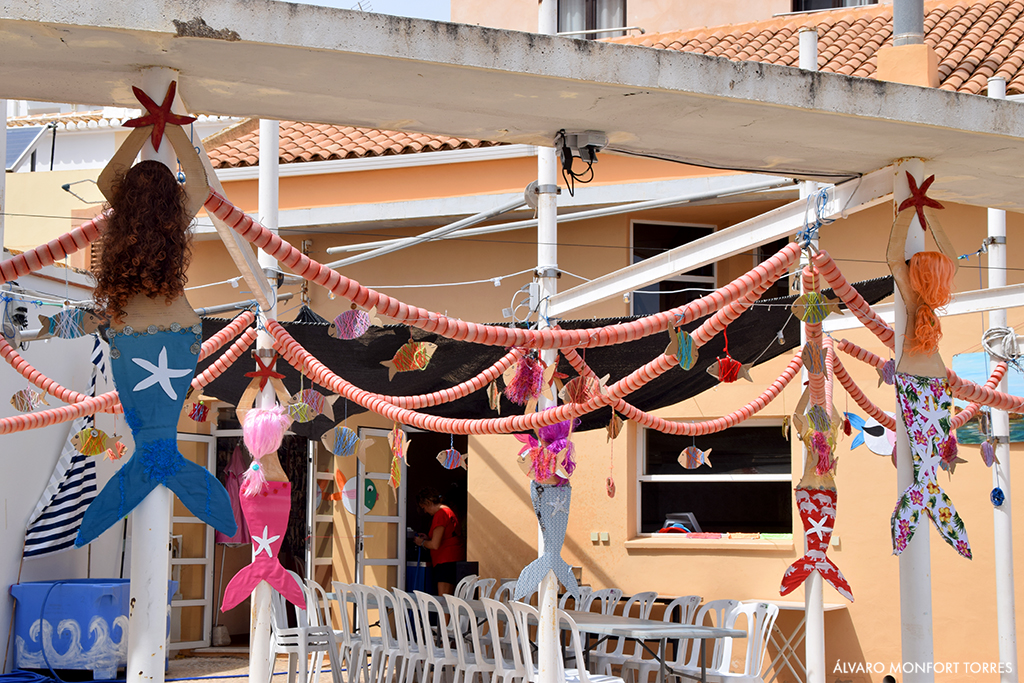
Calle Triana is the oldest of all the streets that have been decorated this year. It is once again the only one in all of Xàbia that dares to paint its long road, being its main hallmark. Blue banners with a letter M for Maria run through all the balconies and windows. It is not just any letter since, for its preparation, the residents have rescued the original template of some letters that were used to commemorate the coronation of the Virgin in the 1950s. A large anchor crowns the crossroads and maritime motifs and plants round off the composition. In addition to the four ornamental garlands of lights that the town hall places in this street, the residents have paid for four more and the lighting decoration of the centre.
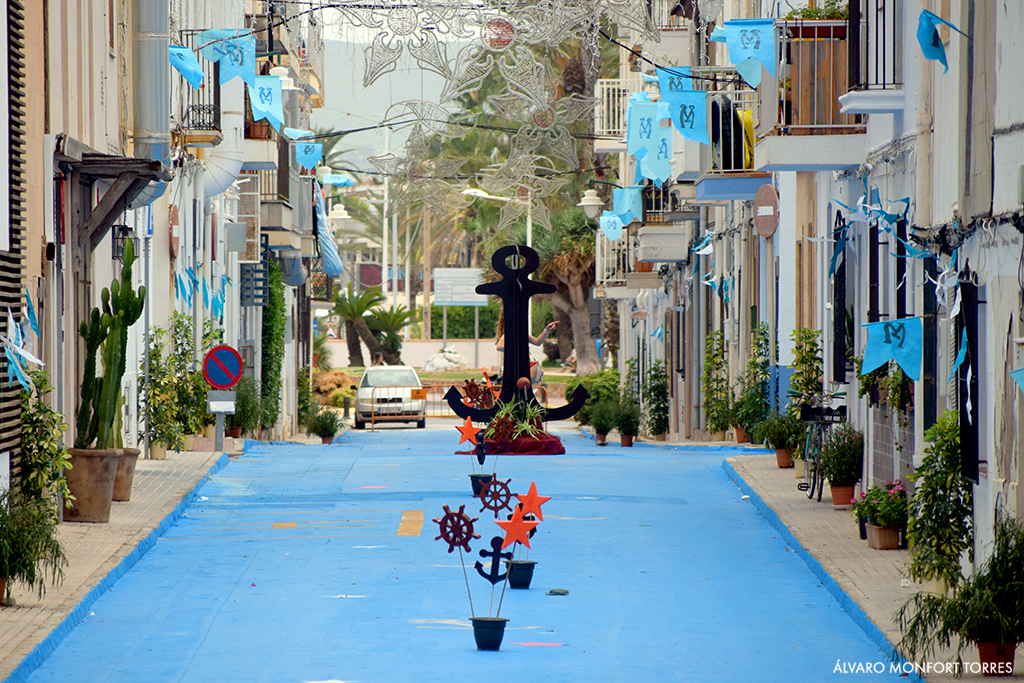
Families have also thrown the rest with their balconies. On Calle Churruca, a large galleon seems to want to leave the very interior of the house to take flight. Nearby, on Calle Magallanes, another balcony reproduces the flower offering in great detail (Mare de Déu de Loreto included) and just below, jellyfish and fish cross the terrace. In Calle Juan Sebastián Elcano they have decorated their railing with images made of rubber allegorical to the port zone and the fiesta and in Calle Doctor Fleming, fish made of cardboard and covered with straws swim in another house in which, in addition, they have placed the old Commission suit of one of the relatives.
Establishments have also joined. La Mar de Flors, the Miraltall butcher shop, the Garcés pharmacy, Doce Pecatto, Casa Mata and the tobacconist are some of the shops that have decorated their windows for the festivities.
The artistic and creative proposal of the neighbors of the port zone is in the street. Valuing it, caring for it, extolling it and vindicating it is a collective task for the rest of the town as a sign of respect for the efforts of all those xabieros who, once again, have opted to keep a unique local tradition alive.
#RespectemelsEngalanats
#JoEngalaneXàbia
javeamigos Photo Gallery
Photographed by Fay Hughes

